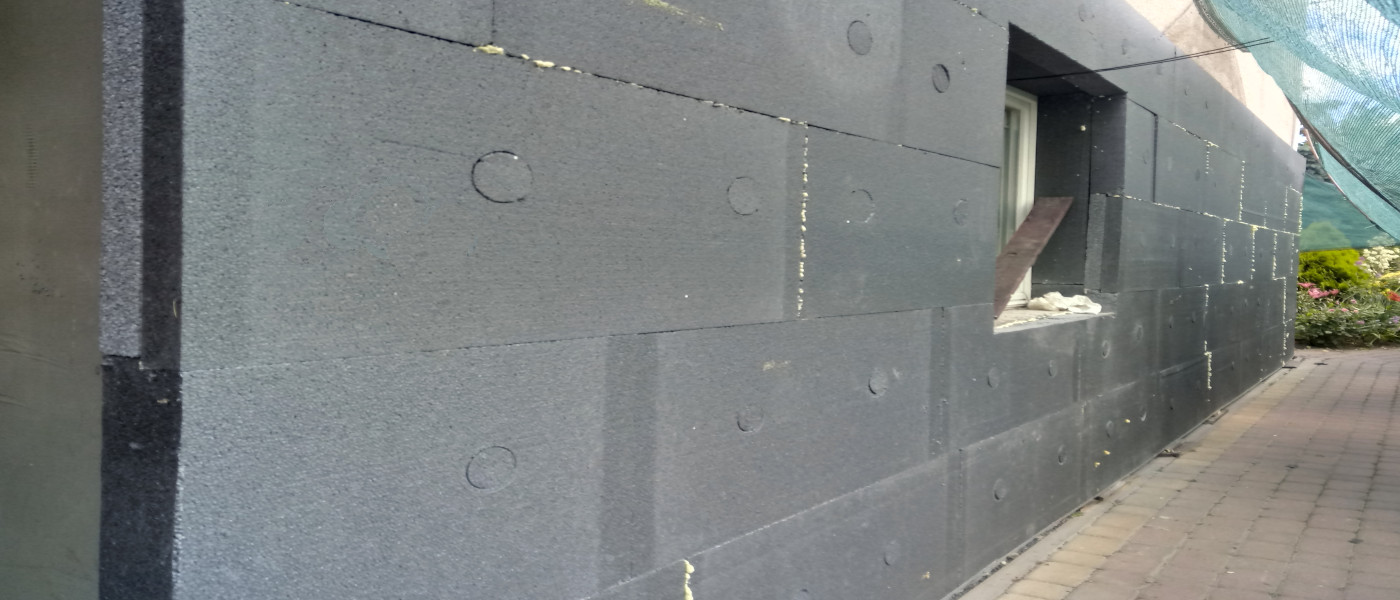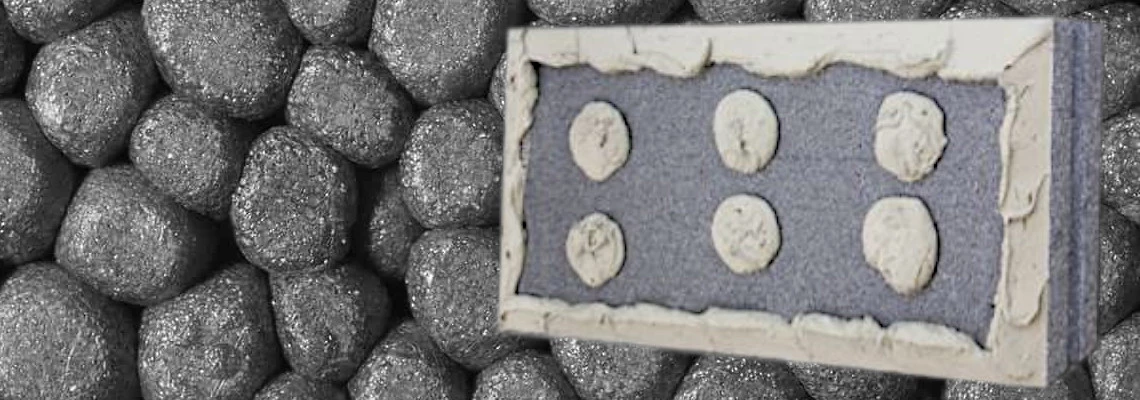
50MM OF LAUGHTER: HOW USING GREY POLYSTYRENE FOR EXTERNAL WALL INSULATION CAN BRING A SMILE TO YOUR FACE*
Are you searching for the best way to insulate your home and save money? Look no further than exterior wall insulation! Rather than disrupting your daily life indoors or losing valuable square footage, insulating from the outside is the way to go.
While Celotex or Kingspan might be popular choices for home insulation in the UK, the best option is actually grey polystyrene (also known as styrofoam), which has a high R-value. In fact, it's the most commonly used material for External Wall Insulation (EWI), with a thickness of 50mm providing excellent insulation.
This article will focus on using grey polystyrene to achieve the best results for your home insulation. Instead of wondering which material to use, we'll provide all the essential information you need to know.
So, why settle for less when you can have the best? Choose grey polystyrene for your exterior wall insulation project and enjoy significant energy savings for years to come!
 Table of contents
Table of contents
GRAPHITE EPS INSULATION: THE SECRET TO GREY POLYSTYRENE'S IMPROVED INSULATION PERFORMANCE
THE ECONOMICS BEHIND THE SIZES OF GREY POLYSTYRENE SHEETS
WHY IS 50MM POLYSTYRENE THE MOST COMMON THICKNESS CHOSEN FOR EXTERNAL WALL INSULATION?
WHERE CAN I BUY 50MM GREY POLYSTYRENE?
WHAT IS 50MM POLYSTYRENE INSULATION R-VALUE?
IS 50MM GREY POLYSTYRENE SUFFICIENT?
WHAT DO I NEED TO CARRY OUT EXTERNAL WALL INSULATION ON MY HOUSE?
THIN COAT RENDER SYSTEM - MULTILAYER SYSTEM FOR EXISTING WALLS
GRAPHITE EPS INSULATION: THE SECRET TO GREY POLYSTYRENE'S IMPROVED INSULATION PERFORMANCE
Before we dive into the boring part of this article, let's quickly refresh what grey polystyrene is. It's simply a better version of the white polystyrene sheet that has graphite added to it. Generally speaking, graphite is commonly added to polystyrene insulation to improve its thermal performance. Graphite, a natural mineral, has a high thermal conductivity, which means it can conduct heat more effectively. When added to polystyrene insulation, it creates a network of conductive pathways that can increase its overall thermal resistance or R-value. Essentially, this means that insulation with graphite can be thinner than traditional insulation materials while still providing the same or even better level of insulation performance.
THE ECONOMICS BEHIND THE SIZES OF GREY POLYSTYRENE SHEETS
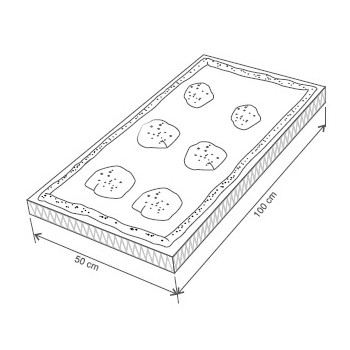 White polystyrene sheet comes in dimensions of 2400mm x 1200mm as well as its smaller variations of 1000mm x 500mm. Grey polystyrene sheet, on the other hand, is only available in two main dimensions of 1200mm x 600mm and 1000mm x 500mm.
White polystyrene sheet comes in dimensions of 2400mm x 1200mm as well as its smaller variations of 1000mm x 500mm. Grey polystyrene sheet, on the other hand, is only available in two main dimensions of 1200mm x 600mm and 1000mm x 500mm.
This is closely related to the economics of external wall insulation. It is known that smaller pieces of polystyrene create less waste around windows and corners.
This helps to save on the amount of material needed to carry out the external wall insulation. Moreover, the fact that it is smaller makes it more convenient on site.
It is easier to cut, but its density often poses challenges even for the most experienced installer. If you want to learn more about cutting 50mm grey polystyrene, click here.
WHY IS 50MM POLYSTYRENE THE MOST COMMON THICKNESS CHOSEN FOR EXTERNAL WALL INSULATION?
 The thickness of 50mm is the most commonly used thickness for external wall insulation in the UK. This is closely related to the roof overhang, which is not very large in the UK and is usually around 100mm to 150mm, making it difficult or impossible to use thicker insulation.
The thickness of 50mm is the most commonly used thickness for external wall insulation in the UK. This is closely related to the roof overhang, which is not very large in the UK and is usually around 100mm to 150mm, making it difficult or impossible to use thicker insulation.
For example, using 90mm of insulation near a 100mm roof overhang would leave only 10mm of overlap, which could result in leaks and relatively quick stains on the external wall.
Therefore, it is important to emphasise that 50mm thickness is the best option for insulation in English conditions.
Picture credit:roofer911.com
WHERE CAN I BUY 50MM GREY POLYSTYRENE?
Surprisingly, it's not a commonly found insulation product in well-known places like B&Q, Wickes, Selco, Screwfix or Travis Perkins. These stores usually sell white styrofoam sheets in large formats of 2400x1200 which makes installation difficult. Grey polystyrene is an innovative product that originated in Europe, specifically in Germany. There are only a few importers in the UK who deal with the distribution of such types of styrofoam. If you're looking for this type of insulation, click here.
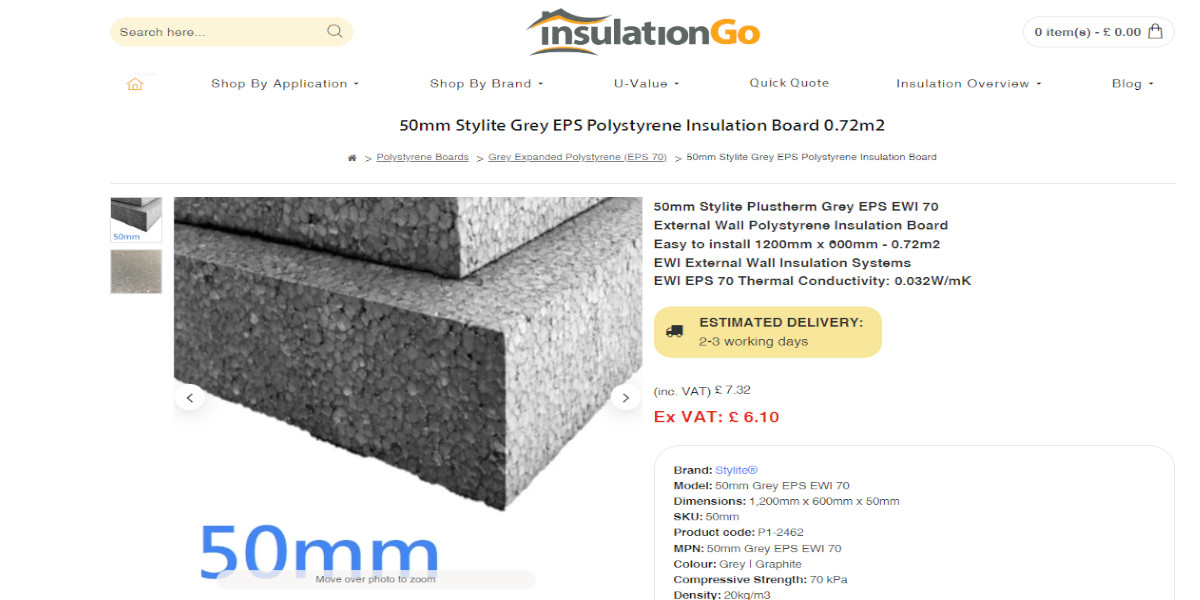
WHAT IS 50MM POLYSTYRENE INSULATION R-VALUE?
The R-value measures the thermal resistance of insulation, indicating its ability to resist heat transfer. In general, the higher the R-value, the better the insulation's thermal performance.
Grey polystyrene sheets have an R-value of approximately 1.52m2K/W. For comparison, Rockwool DD external wall insulation has an R-value of 1.39m2K/W, which is not a significant difference, but it is almost twice as expensive as grey polystyrene. The 50mm of Rockwool DD insulation costs around £19.91 per square metre, while grey polystyrene costs £8.47 per square metre. However, polystyrene sheets have a very low fire resistance class E.
IS 50MM GREY POLYSTYRENE SUFFICIENT?
Generally speaking, U-value can depend on various factors such as thickness of the masonry wall. Installing 50mm of expanded polystyrene (EPS) insulation can significantly reduce the U-value of masonry walls, which typically have a value of around 2.5 W/m². The addition of 50mm Grey EPS insulation can bring down the U-value to 0.6 W/m²k, which is a substantial improvement in thermal performance. Adding 50mm of expanded polystyrene (EPS) insulation to masonry walls can typically result in a significant reduction in heat loss, which can translate to energy savings of 30-40% or more, depending on the specific building and insulation characteristics. Nonetheless, it is recommended to use a thicker layer of insulation (90mm or 100mm) if the roof overhang allows for it, especially since the cost of the system remains the same, and only the cost of insulation changes.
WHAT DO I NEED TO CARRY OUT EXTERNAL WALL INSULATION ON MY HOUSE?
If you are planning to carry out external wall insulation on your house, you will need the following 9 elements:
- Base track-starter track
- Drip bead
- Grey polystyrene
- Polystyrene plugs with plastic pin
- Corner bead with mesh
- Polystyrene adhesive
- Mesh
- Primer
- Render
These elements can be purchased as a complete set (kit) and their usage and application will be explained in detail in the later part of this article.
THIN COAT RENDER SYSTEM - MULTILAYER SYSTEM FOR EXISTING WALLS
External wall insulation often referred as EWI or K-Rend, is a compact multilayer insulation system fixed to an existing masonry wall. In the following sections, we will take a closer look at each of these components and their functions. External Wall Insulation is made from:
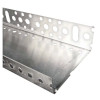 BASE TRACK
BASE TRACK
The base track is essentially an aluminium starter strip used for levelling the first layer of polystyrene insulation. Its main purpose, however, is to protect against rodents, as mice are known to love living in polystyrene and causing damage.
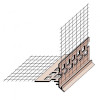 DRIP BEAD
DRIP BEAD
As the name suggests, the drip bead is used to redirect water away from the surface of the building's insulation. This prevents the formation of unsightly streaks at the bottom of the insulation, not to mention the potential damage that could occur in this area.
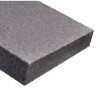 GREY POLYSTYRENE
GREY POLYSTYRENE
This is the primary insulation material for the external wall, effectively raising the temperature of the wall and protecting against cold weather. It also helps prevent the growth of mould on the inside walls of the building. To put it another way, grey insulation can be thought of as a coat that we wrap around the building's walls.
The most commonly used grade (density) of EPS for external wall insulation is EPS 70. The lower the density, the more thermal insulation the material provides, but it is also more permeable, which on the other hand is not a problem for a complete EWI system covered with a final render. The most well-known brands in the UK include:
Jablite, Kay-Metzeler or Stylite.
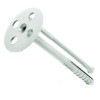 PLUGS WITH PLASTIC PIN
PLUGS WITH PLASTIC PIN
The plugs with plastic pins are specially designed fasteners for securing the polystyrene insulation to the wall. Their strong adhesive allows for better support of the polystyrene sheet, especially in areas exposed to strong winds such as the corners of the house. It is generally accepted that all walls over 2 metres in height should be additionally reinforced with these types of plugs.
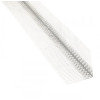 CORNER BEAD WITH MESH
CORNER BEAD WITH MESH
A corner bead with mesh is an aluminum strip with a mesh attached to it. It is used to reinforce and give a neat finish to the corners of buildings, windows, doors, etc. The mesh is embedded in the system. The corner bead with mesh comes in 4 different sizes - 2000mm, 2400mm, 2500mm, or 3000mm.
 POLYSTYRENE ADHESIVE/BASECOAT
POLYSTYRENE ADHESIVE/BASECOAT
Polystyrene adhesive is a crucial element of the wet system commonly known as K-rend. It is used for both attaching the polystyrene insulation to walls and embedding the reinforcing mesh. Its application gives us a base layer for the final render. It is applied in 2 layers with a maximum thickness of 4mm.
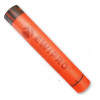 MESH
MESH
Mesh is a reinforcing and hardening layer that is embedded in the wet adhesive applied to the polystyrene insulation. It usually comes in a roll with small mesh sizes, such as 3mm x 3.5mm, 5mm x 5mm, and 9.5mm x 9.5mm, to reinforce external wall insulation and rendered rainscreen cladding systems. The standard size for mesh rolls is 1m x 50m or 1m x 55m, with 50m2/55m2 of mesh per roll. The marking on the mesh roll, usually 100mm from each end, illustrates the overlap required when installing it. Standard houses in England need 2-3 reinforced rolls, which gives about 100-150 m2 of coverage.
 PRIMER
PRIMER
Primer is a liquid layer used before the final element, which is the render. It is used to provide a better surface for the render to adhere to and reduce the wall's absorbency, thus minimising any cracking on the render. This is a crucial process in the system, and omitting it can result in the render falling off.
 RENDER
RENDER
Render is the final visible layer applied to the previously prepared surface. It serves as a protective layer against weather conditions and prevents water from penetrating into the system. The most commonly chosen type of render is a silicone one because of its excellent properties - such as being hydrophobic and self-cleaning. It comes in textured grains of 1mm, 1.5mm, 2mm, or 3mm, with 1.5mm being the most popular in the UK. The colour of the thin coat is consistent throughout, which means that if it is applied correctly, it will have a nice, even-coloured texture. It also means that you can choose the render colour of your choice. Thin coat renders, applied at a thickness of 1-3mm onto a flexible base coat layer, usually leave a textured, slightly grained type finish. This means that a bucket of thin coat render will go far further in terms of coverage than a bag of monocouche scratch-coloured render when applied to the wall. They are generally termed as ‘thin coat renders’ because they’re applied in a very thin layer on top of a reinforced basecoat and have the advantage of being especially crack-resistant.
Related articles:
5 PRO TIPS FOR PAINTING EXTERIOR WALLS LIKE A PRO
EXTERNAL WALL INSULATION: DON'T LET THESE PROBLEMS HAUNT YOU
EXTERNAL WALL INSULATION. THE UGLY TRUTH
*All the information provided in the content published on Insulationgo blog is for informational and educational purposes only. Insulationgo LTD makes every effort to ensure the accuracy and timeliness of the content, but we do not assume any responsibility for any errors or omissions.
The information presented on this blog should not be considered as professional advice or a substitute for consulting relevant experts. Before making any purchase decisions or taking action based on the information presented here, it is strongly recommended to contact the product manufacturer directly to verify the details and ensure its suitability for your specific needs.
By using this blog, you acknowledge and agree that Insulationgo LTD shall not be held liable for any damages, losses, or inconveniences arising from the use or reliance on the information provided herein. This limitation of liability applies to all users of the blog, including but not limited to visitors, readers, and subscribers.










































































































